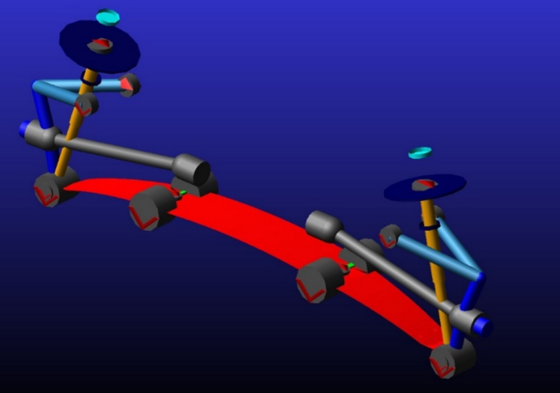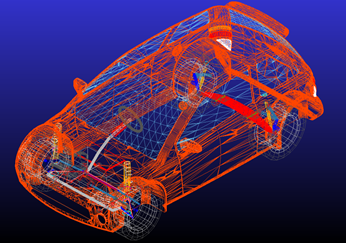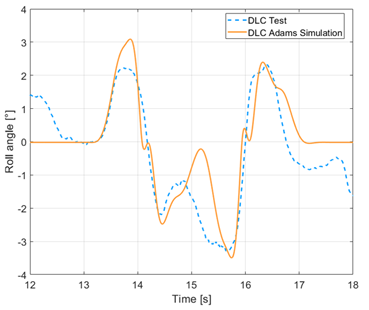Beond s.r.l e Politecnico di Torino - DIMEAS
The main target of the activity (connected also to a master thesis) was the development of a multibody model (using Adams Car) of common A-segment vehicle (a 2007 Fiat 500) which had been previously modified by Beond s.r.l. (www.beond.net).
The unique characteristic of this vehicle was the innovative suspension system mounted on its rear axle, entirely designed by IEHV research Group (https://www.dimeas.polito.it/en/research/research_groups/innovative_electric_and_hybrid_vehicles) and Beond, and after manufactured with the help of some commercial partners.
In particular, the goals were:
- to improve the already existing multibody model of the suspension by replacing some of its parts with a flexible version of its main component (Figure 1) in order to access the differences and quantify the variation in the performances of the subsystem simulation.

- to check the validity of the full vehicle model (Figure 2), including the upgraded version of the rear suspension subsystem, by means of both static test and dynamic manoeuvres performed on a racetrack (Figure 3).
The importance of a validated and reliable full vehicle model is clear. It allows to simplify and accelerate the development of a number of future studies required for the commercialization of the product, such as the evaluation of the handling and the comfort of the vehicle as well the extrapolation of the dynamic loads which act on the mechanical elements in order to compute their fatigue life.

Figure 2

The analysis of the results acquired during all of these activities were very promising for what concerns the prediction of the vehicle body movement and the behaviour of the suspension itself even during very demanding manoeuvre which were simulated with a high degree of similarity with the actual real-life tests performed on the racetrack (Figure 4). However, some weak points in the modelling and testing procedure have been eventually found, especially for what concerns the estimation of the local strain and deformation of flexible bodies, that could be investigated in a future step.

Nicola Rosso, Henrique de Carvalho Pinheiro and Massimiliana Carello